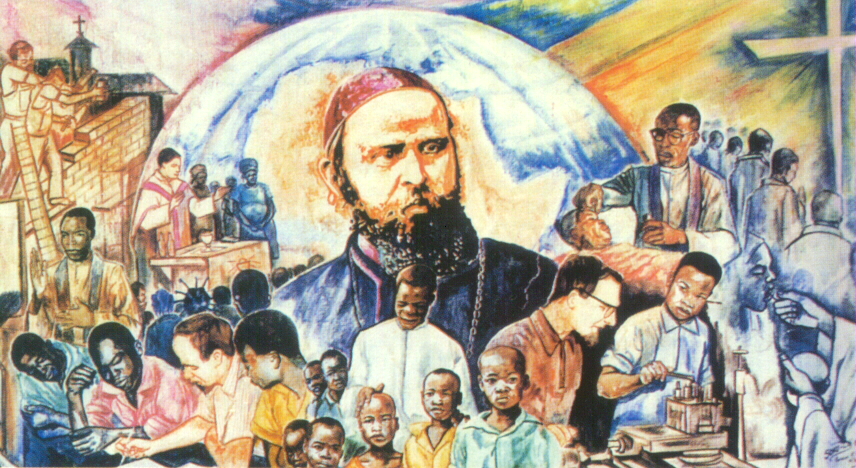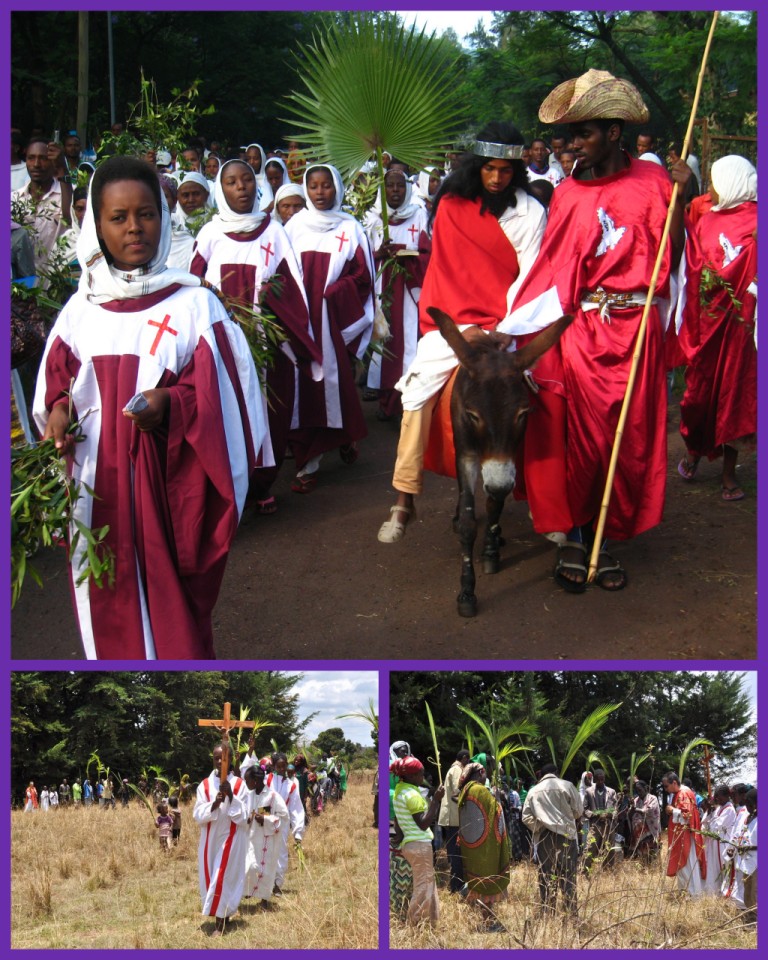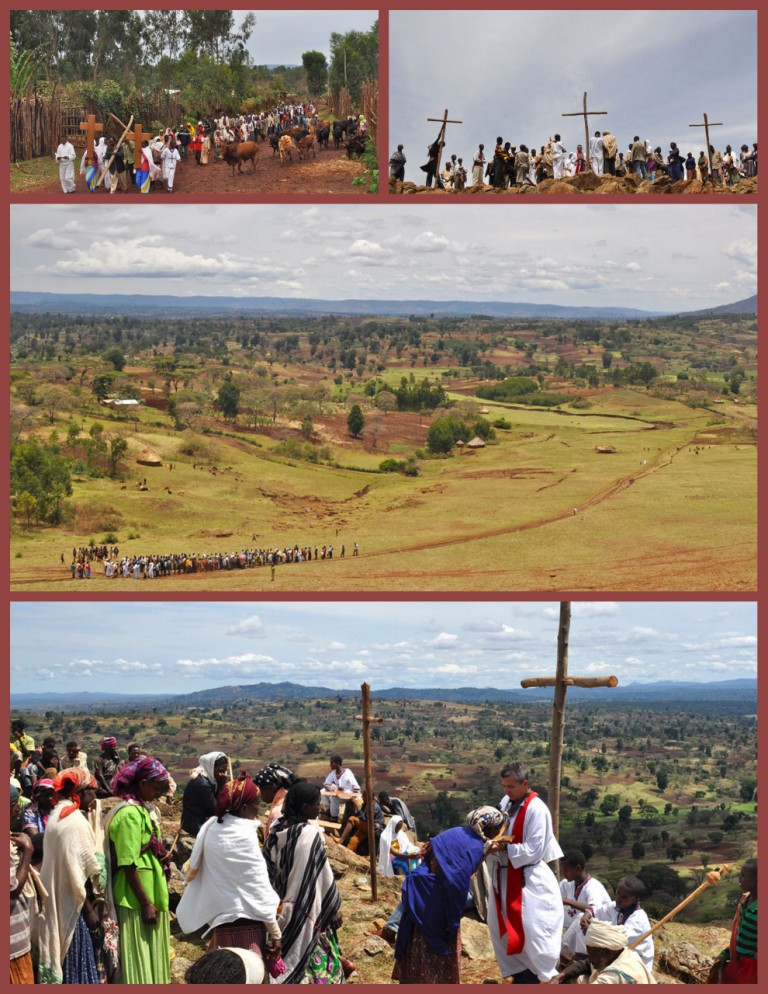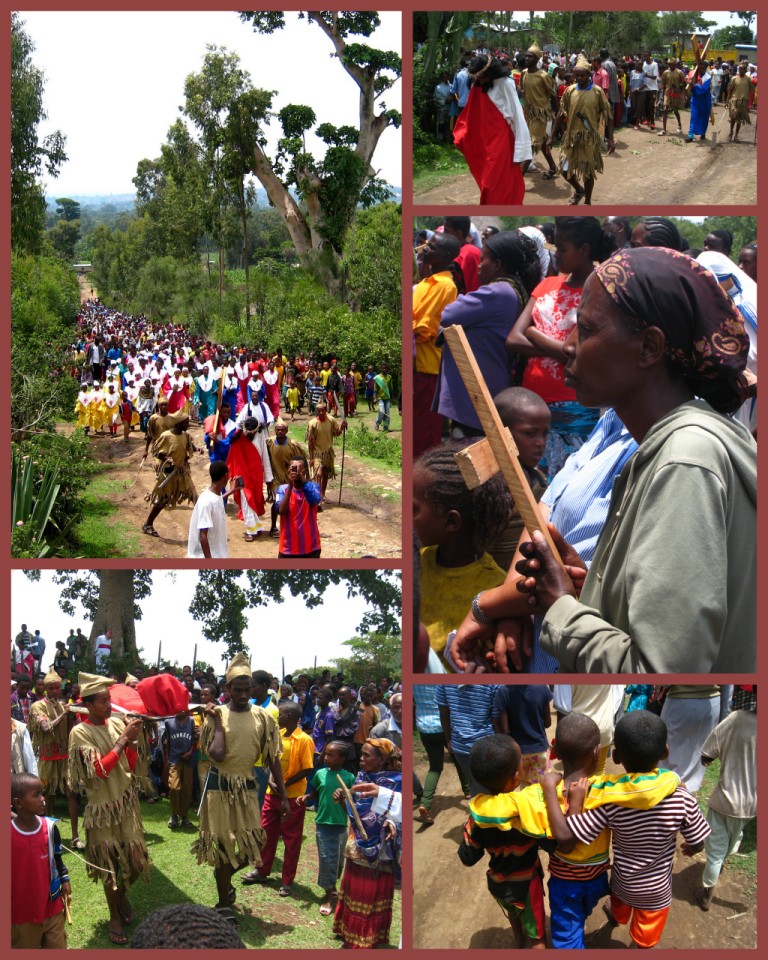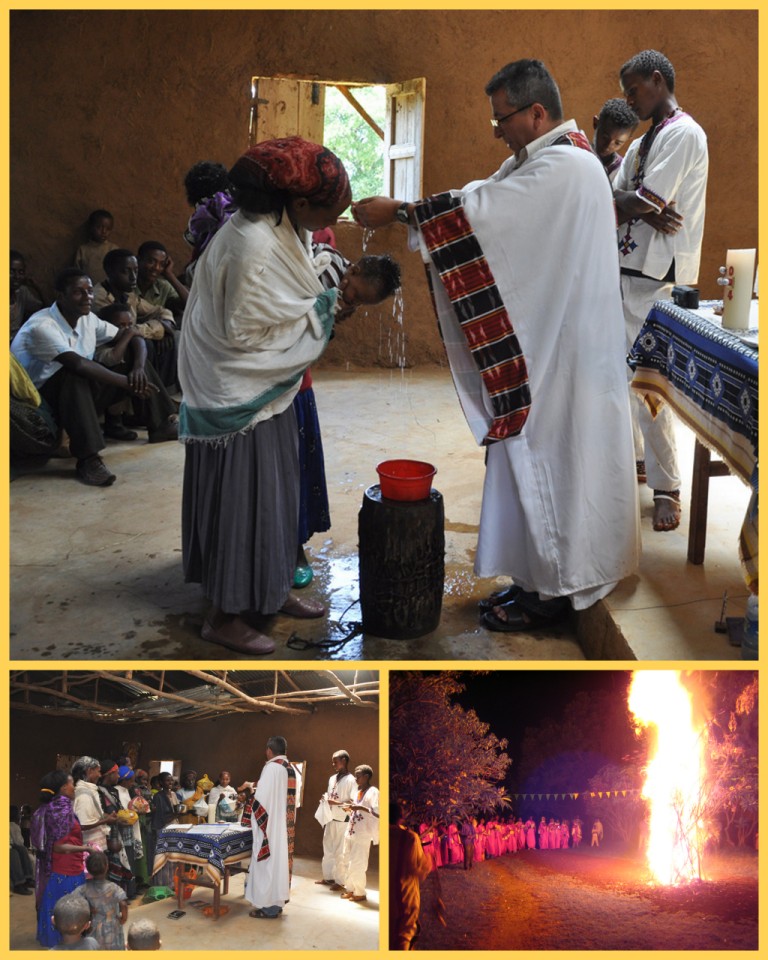A couple years back, we joined Fr. Sixtus Agostini, Comboni Missionary, to journey through the Good Friday “Way of the Cross” liturgy in the small rural mission parish of ‘Kege’ about an hour south drive of Awasa city. Good Friday is the commemoration of the death of Jesus Christ and the Way of the Cross is a retracing of Jesus’ Passion, the final events leading up to his crucifixion. What a precious blessing it was to “walk” this Way of the Cross as guests with our brothers and sisters of Kege.
The Kege area has a soupy, clay valley floor that delivers beautifully fertile soil to the farming community, and is flanked by rocky hills. We turned off the main asphalt highway and as we drove through the final 20 km to our destination we began passing more and more people walking with large crosses they had made of wood. We wondered if they would be joining in for the Way of the Cross procession and also wondered how far they had come from and whether they were going to make it?! We packed as many people as we could into the truck but we looked with astonishment out the window at small groups every few hundred meters diligently walking, crosses in hand.
We arrived around 9:00 am at the local chapel. To our surprise there were about 200 people already gathered praying in silence in the simple chapel. No one peeped a word when we entered. The chapel was constructed using the local method of mud (chika) and chopped straw (chid) packed and smoothed onto a wooden skeleton. Your nostrils filled with an intense earthy aroma upon entering. Maggie and I took a seat on a plank of wood at the back.
Soon we were leaving the chapel on procession. Realizing that we were the only ones without a cross, Maggie picked two small branches from the ground and a piece of grass which she tried to use to fasten the two pieces together. The children understood what was happening. Instantly, numerous teenagers came to the rescue with dried palm leaves and they tied Maggie’s cross tightly together. She shook the mud off the sticks and raised it into the ready position. This spontaneous fabrication triggered giggles and huge smiles around us.
Teenage boys carried a massive cross at the front, along with backpacks carrying a megaphone, receiver, and batteries. The megaphone crackled and Fr. Sixtus began the Way of the Cross procession with the first ‘station’ or moment of the Passion. The Gospel passage was read, followed by a reflection and prayers. The tone was solemn and penitential with the people singing responses to the prayers. As Fr. Sixtus began to read the blessing to conclude the first station, to my surprise, everyone knelt down right where they were standing – be it, the mud (it had rained hard the night before), cow dung or onto rocks, depending on one’s chance. People had dressed up to attend the service, but without hesitation plunged their knees into the mud in humbleness of heart to the whole purpose and penitential spirit of the day, Good Friday.
Everyone stood up and we began walking. The congregation scattered loosely behind the central wooden cross continued in procession with somber song. We repeated the above prayer service 13 more times through all the stations of the Way of the Cross. The procession journeyed maybe 5 km weaving through the town of Kege and surrounding farms. Along the way, Maggie and I were quite a novelty and many young children scrunched in close to walk with us. As we walked and prayed, all the people that we had seen on our drive joined group by group. By the end the congregation grew from 200 to 750. Maggie and I could only feel very touched at how passionate people were about being present on this holiest of days. People had walked hours in order to walk some more. They desired to be present to Jesus and walk with Him.
During the final stations, the procession turned up the valley wall, symbolically mirroring the ascent of Calvary. The pitch was astoundingly steep, demanding your hands to push up on rocks and pull on small trees. This was the way to celebrate the Way of the cross! It was quite the sight to see this large group slowly scurry up the rocky slope, suddenly stopping along the way to pray a station. Maggie and I climbed too. Everyone around seemed very concerned that we were not going to make it. Tiny children and old women would extend their hands at tricky boulder locations to us! At one moment, I made the tinniest of slips on some loose gravel and 100 people all gasped in unison.
We arrived all together at the top of the slope and everyone sat down amongst the brush and rocks. The procession now flowed into the celebration of the Good Friday service which Fr. Sixtus started over the megaphone. A few minutes later, the sky flipped from sunny to stormy and it poured. It poured hard. Everyone huddled under the few umbrellas that people had brought. Maggie and I soon had 7 children piled in tightly under our umbrella. The liturgy continued and everyone did their best to listen to the megaphone above the sound of the rain.
After communion had been distributed under umbrellas, the rain and the liturgy both ended together. There were smiles all around – both from the happiness of having completed the 3 hour procession and from a humorous knowledge of having endured together the sun, mud, steep pitch and thunderstorm. Roasted dry peas were passed around in celebration.
This story is not original or unique. It is the recounting of a scene which is played out in countless unknown places in the developing world – a scene where people who live in extreme material poverty gather together and turn their hearts to God. The people did not come to hear a theological lecture on Jesus’ Passion or to participate in the Easter journey out of obligation. They came simply to walk because they love Jesus and want to express their gratitude for the love He has shown them.
In front of this kind of faith, I could only but feel humbled.
– Mark & Maggie Banga
Comboni Lay Missionaries serving in Awassa, Ethiopia





